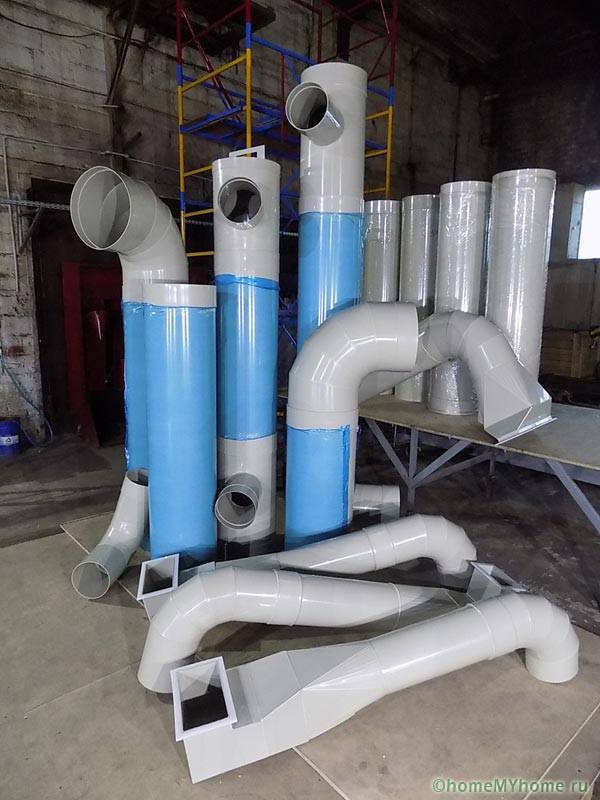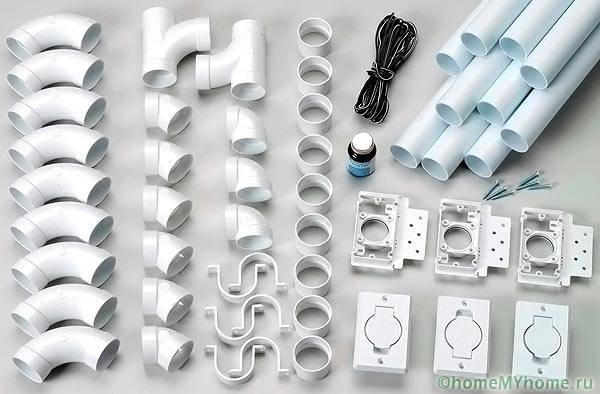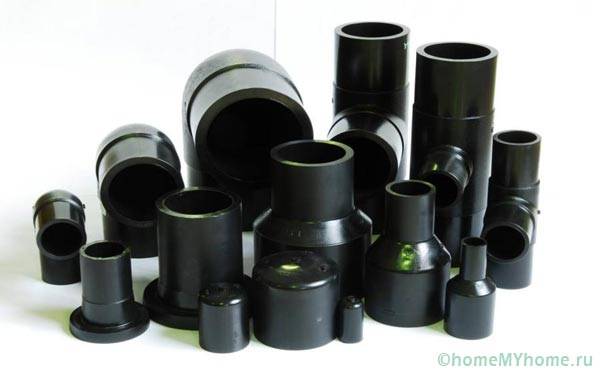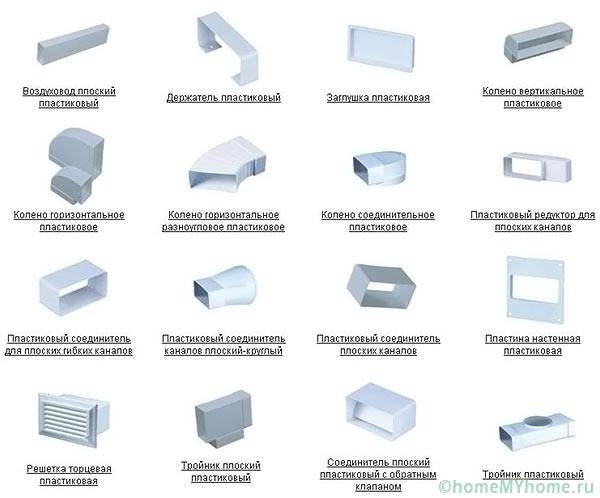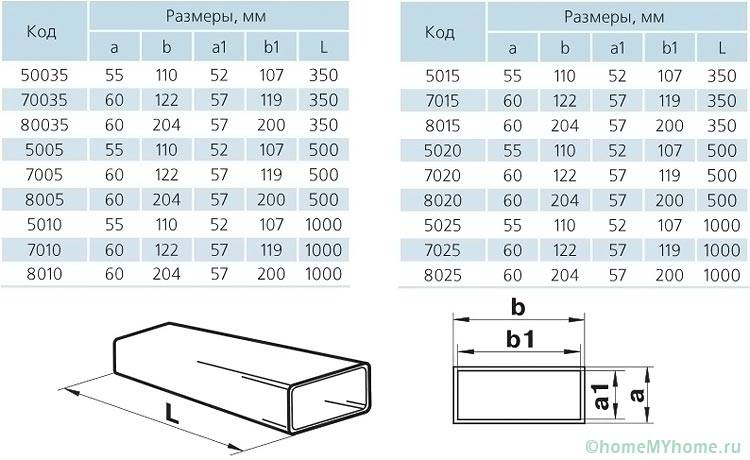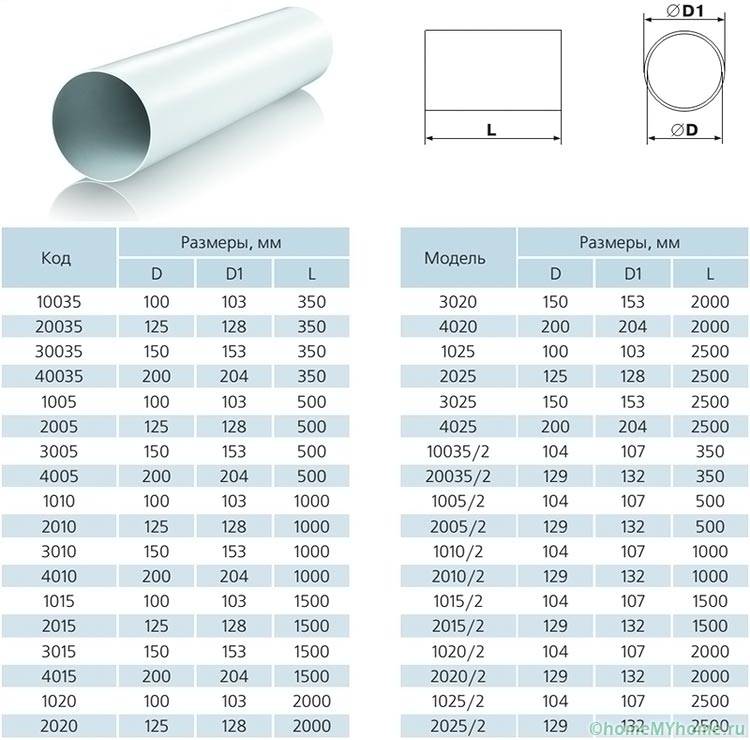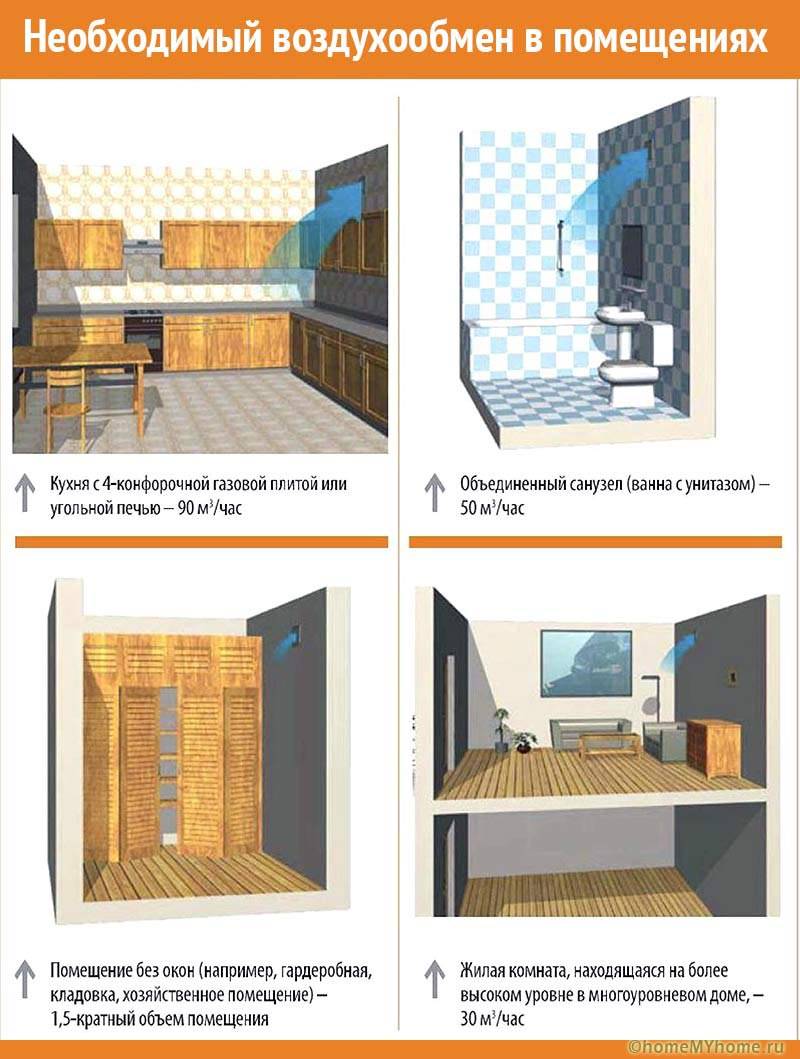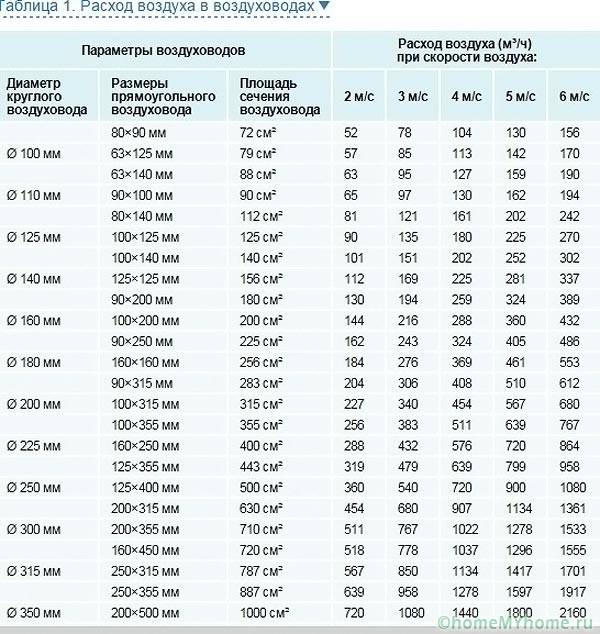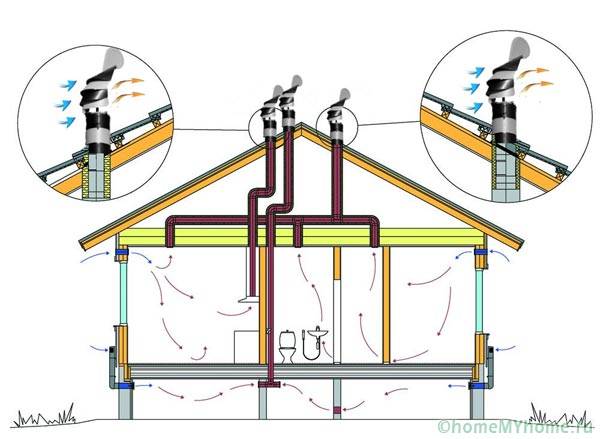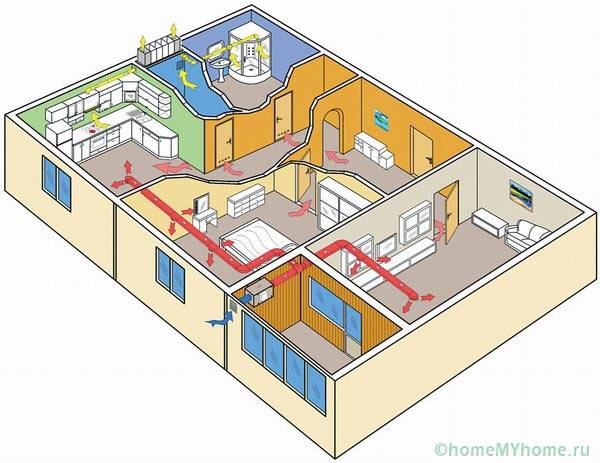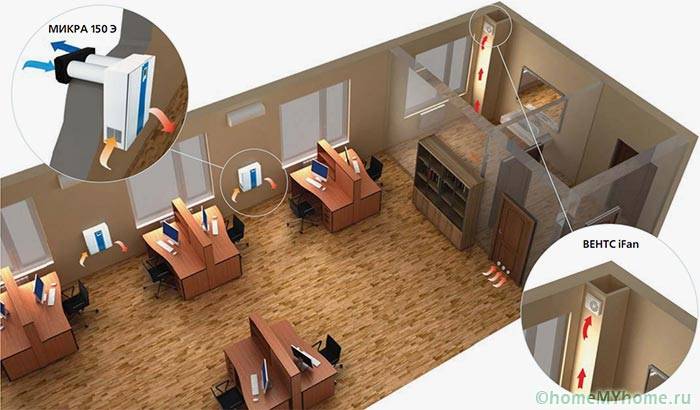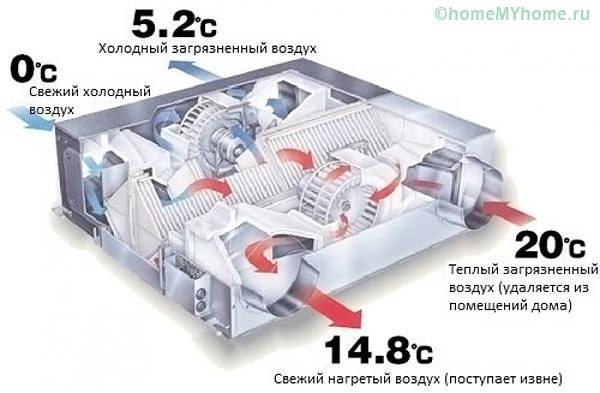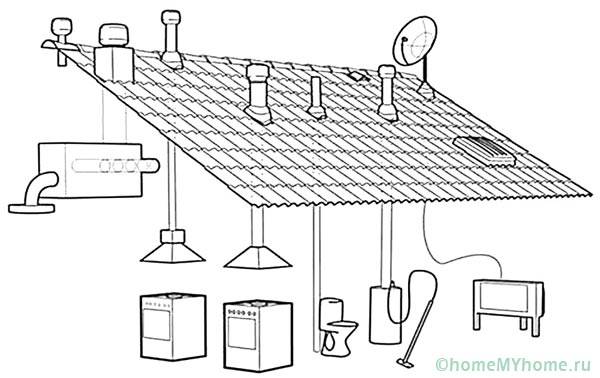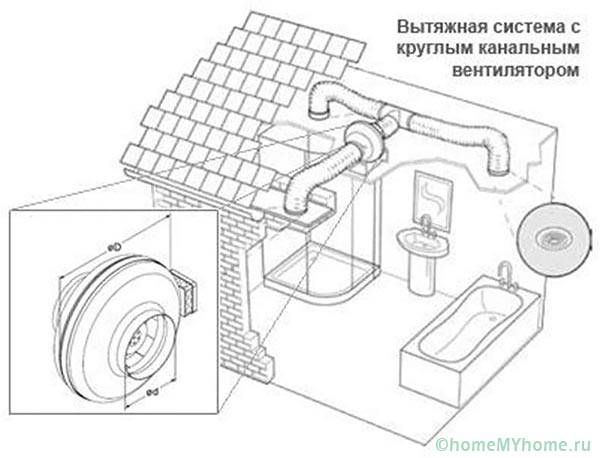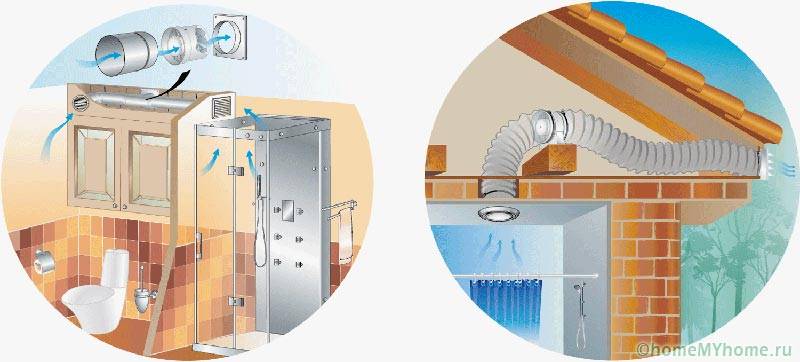Plastic air ducts for ventilation: what is the advantage?
HAn expensive alternative to rigid galvanized air ducts are plastic air ducts for ventilation of the supply, exhaust, combined type. To simplify the integration of engineering systems into interiors, the structural frames of buildings, manufacturers produce polymer air ducts of different sections and sizes.
The content of the article
Video: the use of plastic ducts
Overview and characteristics of plastic ducts, pros and cons
It is forbidden to use plastic air ducts for ventilation in hoods heating devices. There are no other restrictions. There are round, rectangular, oval, square boxes made of materials:
- PVDF - acid-resistant fluoroplastic for temperature conditions - 40 - + 140 degrees;
- PVC - heat-resistant vinyl (within +180 degrees), rigid smooth pipes of any section and flexible corrugation;
- HDPE (HDPE) - flexible polyethylene with no special properties;
- PP - chemically resistant propylene is inert to acids, organics, alkaline solutions.
Regardless of the material, cross-section, all polymer air ducts are equipped with fittings, additional elements. Pipes are extended with sockets, are attached to fans, air heaters with flanges with gaskets.
Rectangular plastic air ducts for ventilation have standard sizes from almost all manufacturers for any need. The cross-section of circular air ducts is also presented in the widest range from 100 to 1250 mm.
Plastic ventilation device
For private homes, a single change of the entire volume of air in the premises on an hourly basis is sufficient. Therefore, plastic air ducts are needed for ventilation of such a cross section so that, with natural draft or with the help of fans, this condition is ensured, or 30 cubic meters can be supplied / removed from the room every hour for each family member.
At the same time, drafts should be excluded, the flow rate in the room itself should be kept within 0.5 m / s.
Natural ventilation
Without additional costs, only natural ventilation is equipped, which is present by default in apartments of multi-storey buildings:
- window blocks of living rooms are equipped with supply valves;
- in the load-bearing inner walls of the kitchen, there is a ventilation duct shaft that goes over the roof;
- the air coming from the window valves ventilates the room, rushes to the zone of discharged pressure (to the kitchen), ventilating along the way the corridor.
In cottages, ventilation ducts are forgotten or materials and construction technologies are used that do not allow ventilation ducts to be installed in load-bearing internal walls. For example, in the crowns of a log house, it is impossible to cut through solid vertical channels. Thickness SIP panels less than the cross-section of the air ducts.
Therefore, budgetary natural ventilation is designed, the purchase and installation of plastic air ducts for ventilation and connecting, special fittings is carried out. An approximate wiring diagram for polymer air ducts is shown in the lower diagram.
Supply system
In low-rise buildings in their pure form, supply ventilation ducts are very rarely used. There are few rooms in the building, the working area of each of them is small, the volume of air exchange is insignificant. Therefore, as needed, supply fans are cut into the outer walls, a built-in ventilation duct or a prefabricated structure made of polymer boxes is created inside the kitchen.
Recuperative ventilation is more common in a private house made of plastic pipes, inside which the cold air entering the cottage is heated by the outgoing warm flows. This system belongs to the supply and exhaust system, but is mistakenly called by some individual developers as an exhaust system.
Exhaust system
The hood is required more often, since the natural ventilation channels often cannot cope with the air volume. Or in kitchens, separate hoods over slabs, from which you need to stretch pipes above the ridge.
The performance of a natural ventilation system can be increased by installing an axial or centrifugal fan. It is necessary to take into account:
- do-it-yourself exhaust ventilation from plastic pipes creates a zone of discharged pressure;
- in the absence of a forced supply of supply air, drafts occur.
Therefore, it is necessary to design and calculate equipment, air duct sections. In addition, heat is removed from the house with the humid exhaust air. Therefore, recuperation systems are preferable to supply, exhaust ventilation systems.
Calculator for calculating the required diameter of the duct by the volume of the room and the exhaust capacity
Tips & Tricks
The main nuances of the construction of ventilation systems from polymer pipes are:
- treatment of boxes, fittings, additional elements with an antistatic agent before installation will reduce the operating budget, dust will not linger in the channels, it does not need to be removed;
- when making an estimate, you need a stock of fittings, the footage of boxes, fastening clamps, brackets, it is recommended to purchase 15% more;
- flexible corrugations should be mounted without a margin so that the pipe does not stretch during operation, changing the section, increasing the resistance within the system;
- rectangular boxes minimize the height of suspended, stretch, level ceilings, however, they can make noise during operation, and increase the default flow resistance.
Helpful information! The waste pipe, which is a continuation of the sewerage system, necessary for the removal of gases resulting from the decomposition of sewage by anaerobic bacteria, does not apply to ventilation systems. It is collected from PVC sewer pipes, passed through the roof or mounted on its head inside the house with a vacuum valve, which allows you to relieve pressure in the drainage system of the home.
Video: ventilation in the house using plastic ducts
Thus, polymer boxes and pipes are more convenient for self-manufacturing ventilation systems than galvanized, stainless steel. The tightness of the joints is ensured by sockets, flange seals. The air ducts are practically silent, they do not collect dust after proper processing.
Video: ventilation in the house using plastic ducts




